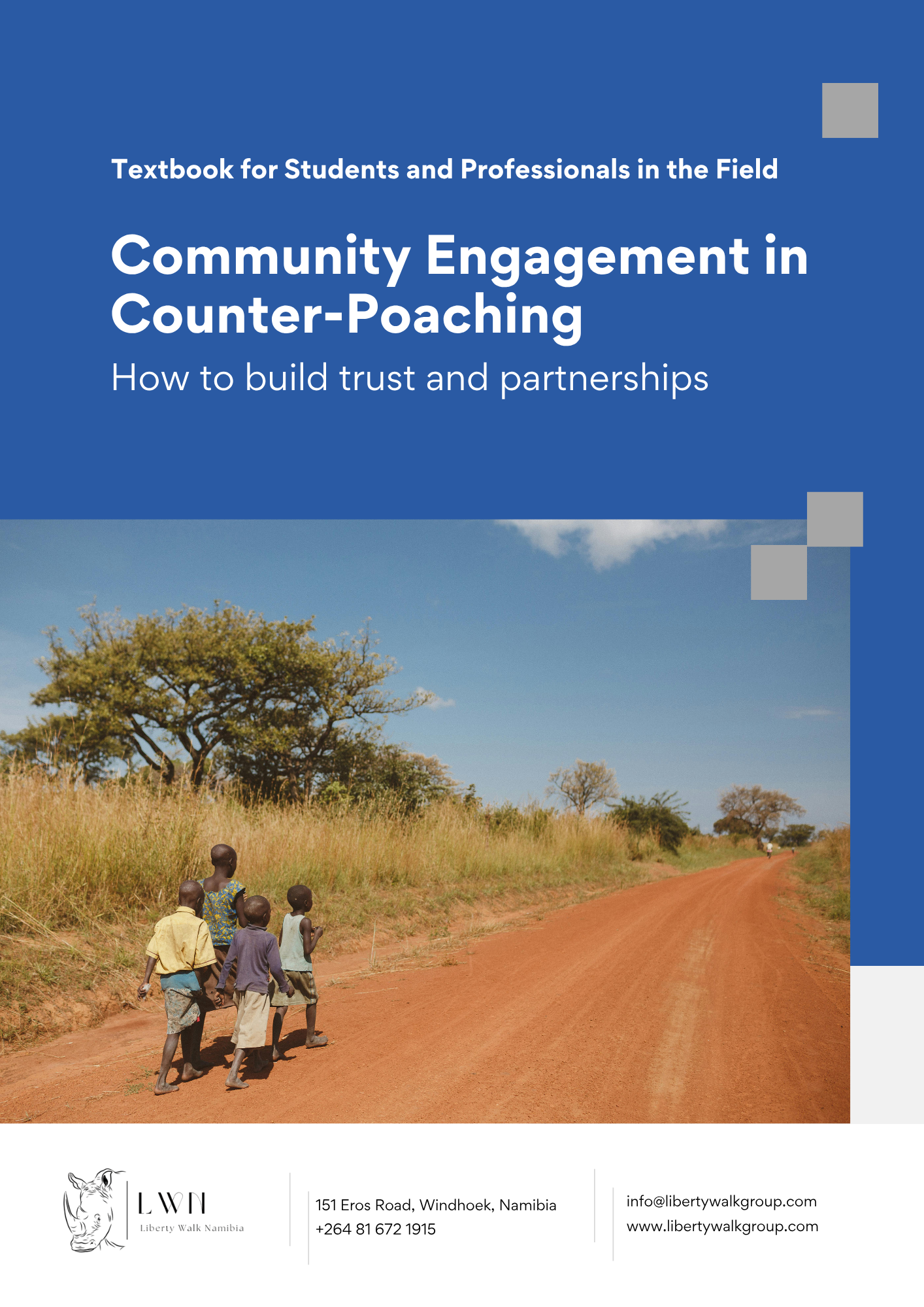Namibian Law
Protected resources law in Namibia.
The "Legal Framework for Counter-Poaching" textbook is a critical component of the Liberty Walk Namibia (LWN) Counter-Poaching Curriculum, designed to achieve accreditation under the Namibian Qualifications Authority (NQA) and National Qualifications Framework (NQF).
This framework outlines a comprehensive structure to equip students with knowledge of the Namibian legal system as it applies to wildlife conservation, ensuring they can operate lawfully in anti-poaching roles.
Pitched at NQF Levels 4–6, it caters to students with basic to advanced skills, complementing existing syllabi like Counter-Poaching and Advanced Tracking.
The textbook addresses Namibia’s poaching crisis, with 241 rhinos poached between 2012–2017, by providing legal knowledge for effective enforcement.
Leadership
The LWN Command and Leadership Textbook equips anti-poaching rangers with essential leadership and communication skills for counter-poaching operations in Namibia’s conservancies.
Comprising 6 modules, it covers foundational leadership, cultural context, communication, ethical command, and team dynamics, tailored to conservation guardianship. Part of the National Diploma in Advanced Counter-Poaching Tracking (48 credits for this textbook),
it aligns with NQA/NTA standards and MEFT’s Blue Rhino priorities, enhancing ranger effectiveness and wildlife protection.
Social Aspects of Conservation
The "Community Engagement in Counter-Poaching" syllabus is an essential component of the Liberty Walk Namibia Counter-Poaching Curriculum, designed to achieve accreditation under the Namibian Qualifications Authority (NQA) and National Qualifications Framework (NQF).
This framework equips anti-poaching rangers with skills to collaborate with local communities, fostering community-based conservation and intelligence sharing to combat poaching in Namibia’s diverse regions, including deserts, savannas, and bushveld. Pitched at NQF Levels 4–5, it caters to rangers with basic to intermediate skills, complementing syllabi like Basic Tactics, Advanced Tactics, Legal Framework, and Conservation and Wildlife Technology.
The syllabus addresses Namibia’s poaching crisis, by enabling rangers to build trust, gather actionable intelligence, and implement sustainable conservation practices.
The framework aligns with NQA standards, including NQF alignment, stakeholder involvement, quality assurance.
It incorporates input from conservation organizations (e.g., WWF Namibia, www.worldwildlife.org), law enforcement (e.g., NAMPOL), and local communities, ensuring relevance and endorsements. The structure follows the user’s process.
The syllabus emphasizes “Train as we Operate” and “Lead by example,” ensuring instructors model effective community engagement practices critical for counter-poaching operations.



